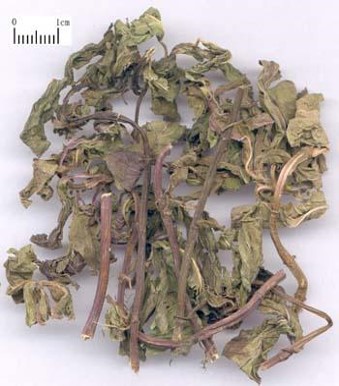| Function and treatment |
Dispersing wind-heat, clearing the head and eyes, sharpening the pharynx, penetrating the rash, draining the liver and moving Qi. Used for wind-heat colds, wind-heat at the beginning, headache, red eyes, laryngeal paralysis, mouth sores, rubella, measles, chest distension. |
| Origin and best harvesting period |
Mint is produced in most parts of China, mainly in Jiangsu, Zhejiang and Jiangxi. It grows by the side of small streams and ditches, roadsides and wetlands in the mountains, or is cultivated. In summer and autumn, when the stems and leaves are in full bloom or when the flowers are in three rounds, it is harvested on sunny days and dried in the sun or in the shade. |
